Imagine my squeal of delight when I left my landscape architecture studio Friday afternoon to see a huge swarm on the side of the building! It is a pretty freaky sight to see – this huge mass of buzzing creatures. A couple school officials were out there scowling.
Bees will setup a temporary swarm location in a variety of places, but typically it is sheltered a bit from the elements. This window sill, for example, protects them from strong winds and rain. Other temporary locations will be places like tree branches, overhangs of roofs, hollowed trees, etc.
What do you do when you see a swarm? Call the Swarm Hotline in your area! There is typically a local beekeeping association that has a list of local beekeepers who would love to add another hive to their honey operations. In the state of Oregon, call the Oregon State Beekeepers Association.
I called my buddy Harper who then called his buddy Brandy who rounded up a couple friends all suited up and ready to capture the swarm. They climbed up the side of the building and gently swept the bees down into the hive box. It was nice and dark in there, so the bees stayed for the most part.
The most important part of capturing a hive is to ensure you get the queen. Without her, the hive will most likely collapse.
If memory serves me correctly, they gorge themselves before leaving their hive to swarm as they don’t know when their next meal will be. This makes them less likely to sting, since they need to contract their bodies to push their stinger down to sting. It is uncomfortable for them to bend that much with a full stomach.
Not to say they can’t sting! They actually did sting one of the bee workers trying to capture this hive. I think the bee was caught between folds in the bee suit and got pinched.
If you are interested in keeping bees in the backyard (or rooftop if you live in Manhattan), check out these past posts of mine on how to keep them. Scroll down the page to see the whole three part series, which also explains more about swarming. Fascinating creatures and I look forward to starting my own home bee-keeping operation some day soon.




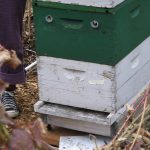

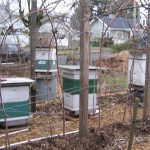

 This cluster was about the siz
This cluster was about the siz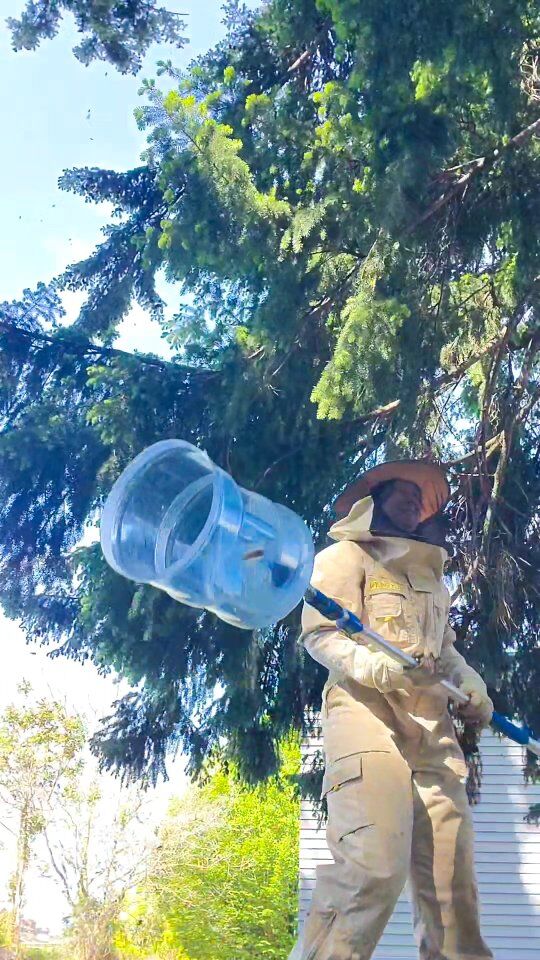
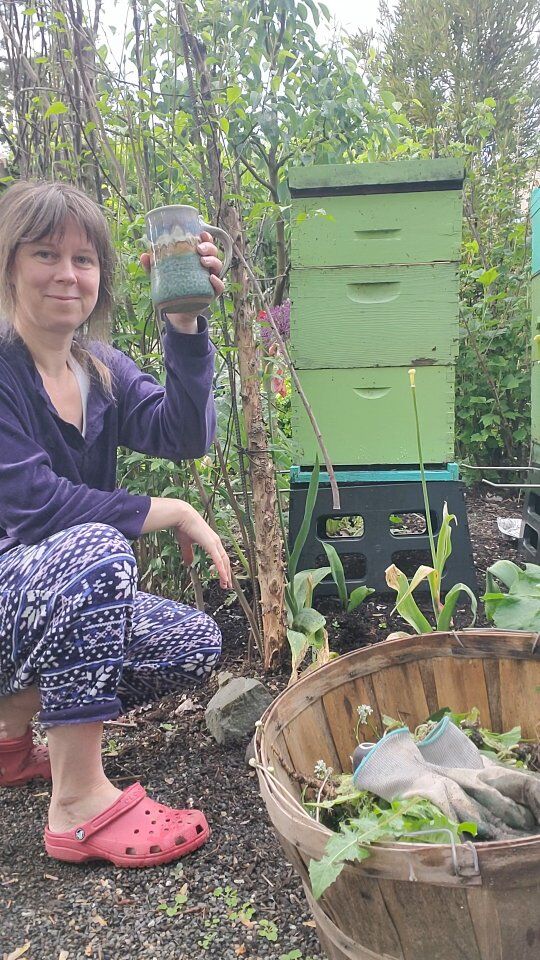


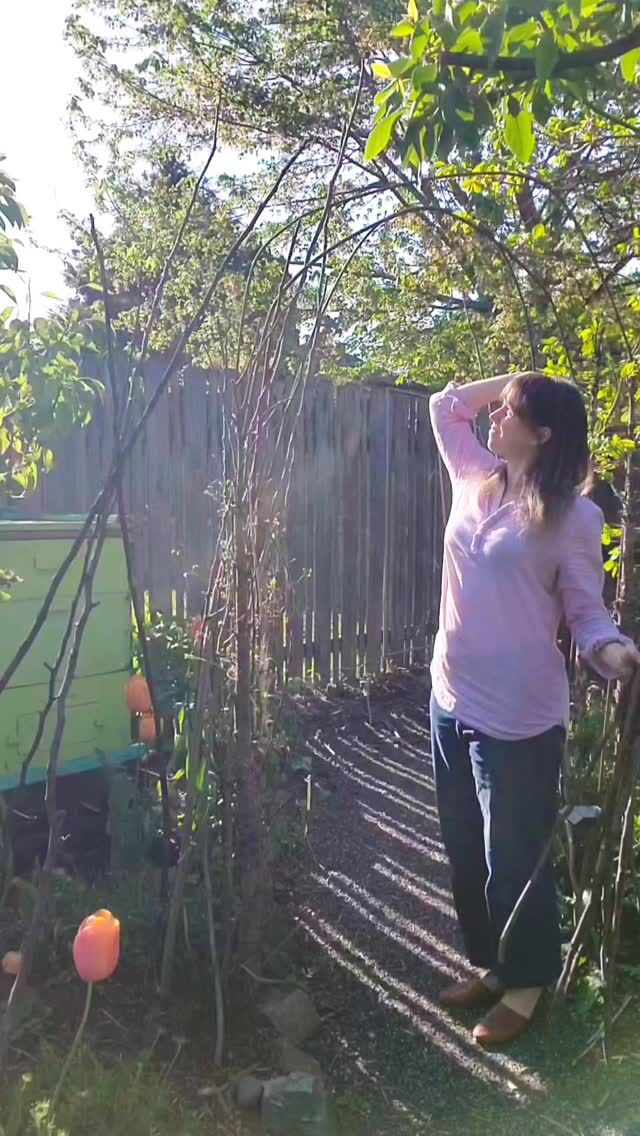
 I start with a
I start with a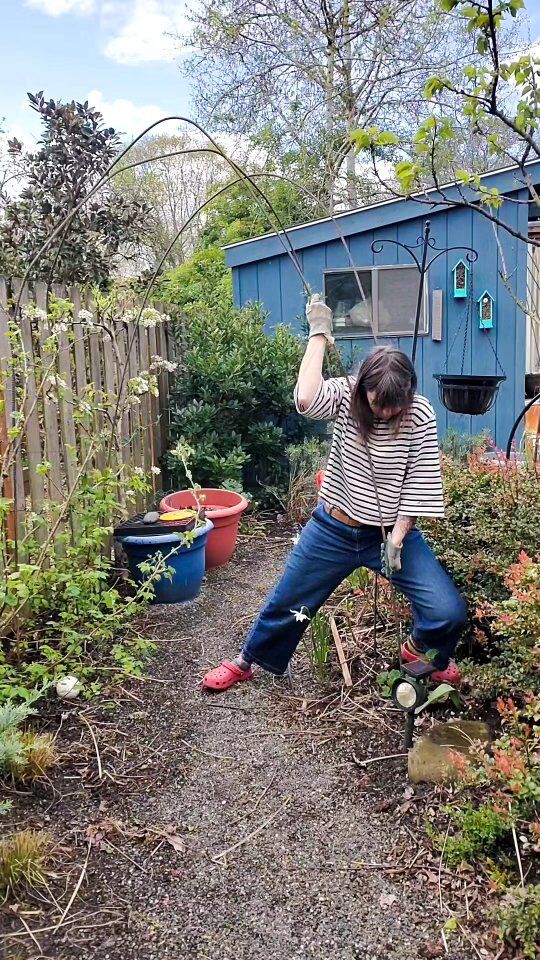

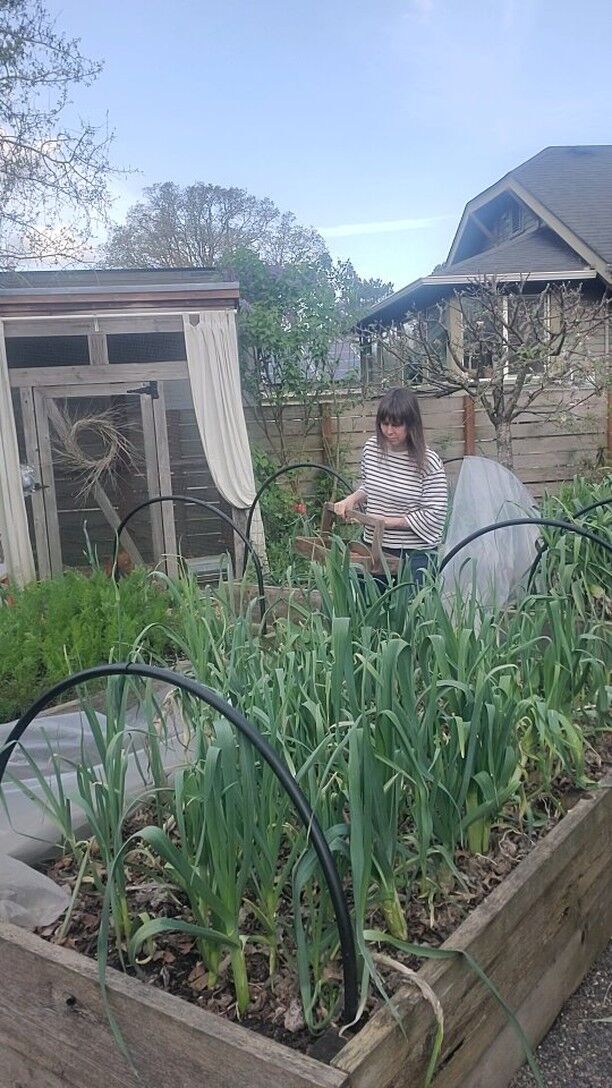
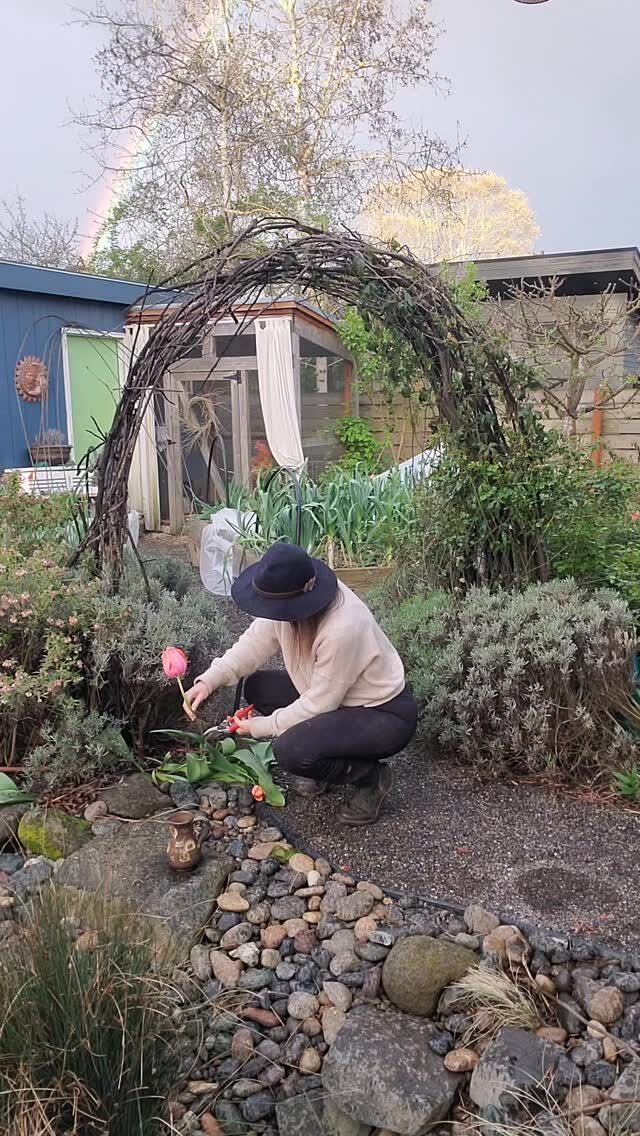
Hi Renee, I found th pix’s intresting. I have an intense intrest in bees and have just started to read everything on bees and bee keeping that I can get my hands on, I have several books on the way which should arive here next week. I am 74 yrars old and plan to stop working at the end of this year and plan to help as many bees survive as I can.
SInce I love flowers and gardening I figure why not have bees to complemt each othe. I plan to have a hive ready next spring and a two or three pound colony in place. I can’t wait to get started
best regards Jack in south west pennsylvania.